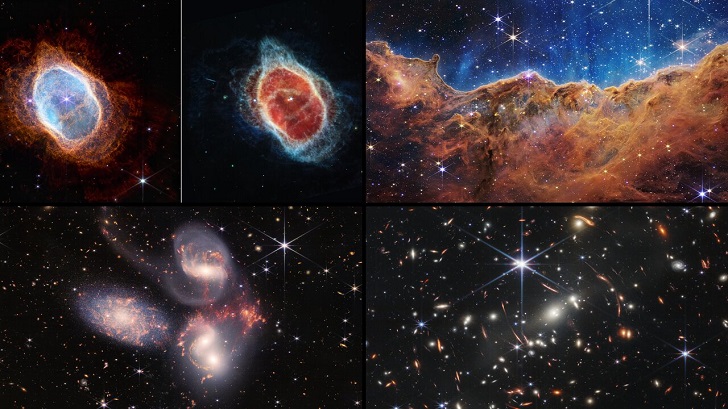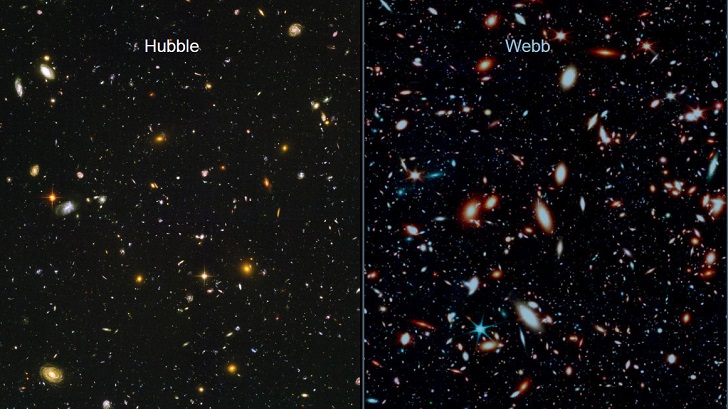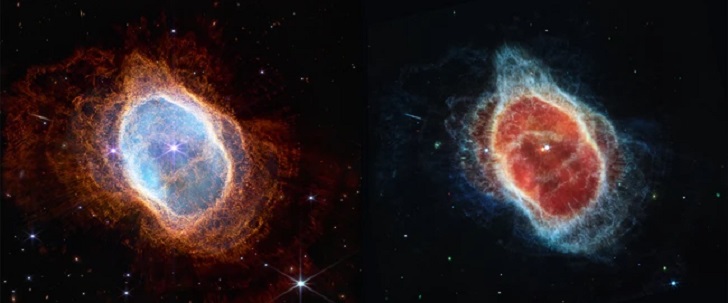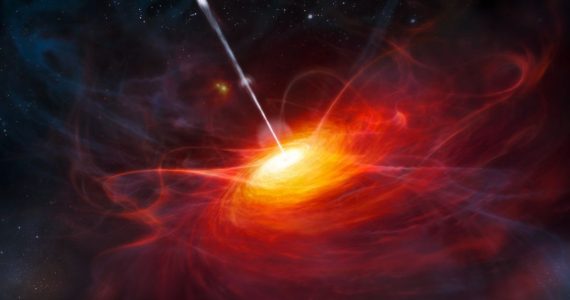Infrared astronomy is carried out by the James Webb Space Telescope (JWST), a space telescope. Being the biggest optical telescope in orbit, it has a high resolution and sensitivity that enable it to see things that the Hubble Space Telescope cannot because they are too ancient, far away, or dim. This would enable research spanning many domains of astronomy and cosmology, such as detecting the earliest stars, the birth of the first galaxies, and precise atmospheric characterisation of possibly habitable exoplanets.
How it works

The telescope primarily detects light in the infrared to see objects like the early galaxies and protostars that emit at those wavelengths. A sun shield covering 150 square metres (1,600 square feet) shields the telescope from heat radiation, which is a need for infrared satellite observatories. The solar screen and the mirror were both launched folded and have now unfurled in orbit since there is no rocket broad enough to support the JWST in its deployed condition.
James Webb Space’s first images
The first scientifically significant photographs from the new telescope have been made available by the James Webb Space Telescope team(opens in new tab). The oldest galaxies ever observed by human eyes, proof of water on a planet 1,000 light-years distant, and amazing details illuminating the birth and death of stars may all be found in them. Webb’s mission is to investigate the beginnings of the cosmos, galaxies, stars, and life, and the five photos shown on July 12, 2022, deliver on that promise. Astronomers jumped at the chance to use Webb as soon as the suite of instruments aboard had all cooled down and were functioning properly. The initial photos each contain sufficient information to generate significant scientific findings.
Deep image

Numerous galaxies located 13 billion light-years away may be seen in the amazing first image from JWST that was released. Their light travelled to Earth for practically the whole duration of the cosmos. The image depicts how these galaxies appeared immediately after the Big Bang.
With the aid of a nearby galaxy cluster, the James Webb telescope could detect faraway small specks of light. About 4.6 billion light-years separate us from the cluster. Spacetime is affected by the galaxy cluster’s mass, which makes things behind it look enlarged. The telescope could focus on galaxies in the very early cosmos.
WASP-96 b
This image attempted to give us a glimpse into space through a graph, as opposed to the other images in this first set, which were all photographs acquired with the JWST. It is a thin graph that provides important details on the atmosphere of WASP-96b, a hot giant exoplanet with a mass comparable to Saturn.
The planet is approximately 1,120 light-years away from Earth, and the information in this graph reveals water vapour, hazes, and cloud evidence. The graph’s results demonstrate that the JWST might be used to detect planets suitable for life.

Star death
This image attempted to give us a glimpse into space through a graph, as opposed to the other images in this first set, which were all photographs acquired with the JWST. It is a thin graph that provides important details on the atmosphere of WASP-96b, a hot giant exoplanet with a mass comparable to Saturn.
The planet is approximately 1,120 light-years away from Earth, and the information in this graph reveals water vapour, hazes, and cloud evidence. The graph’s results demonstrate that the JWST might be used to detect planets suitable for life.




